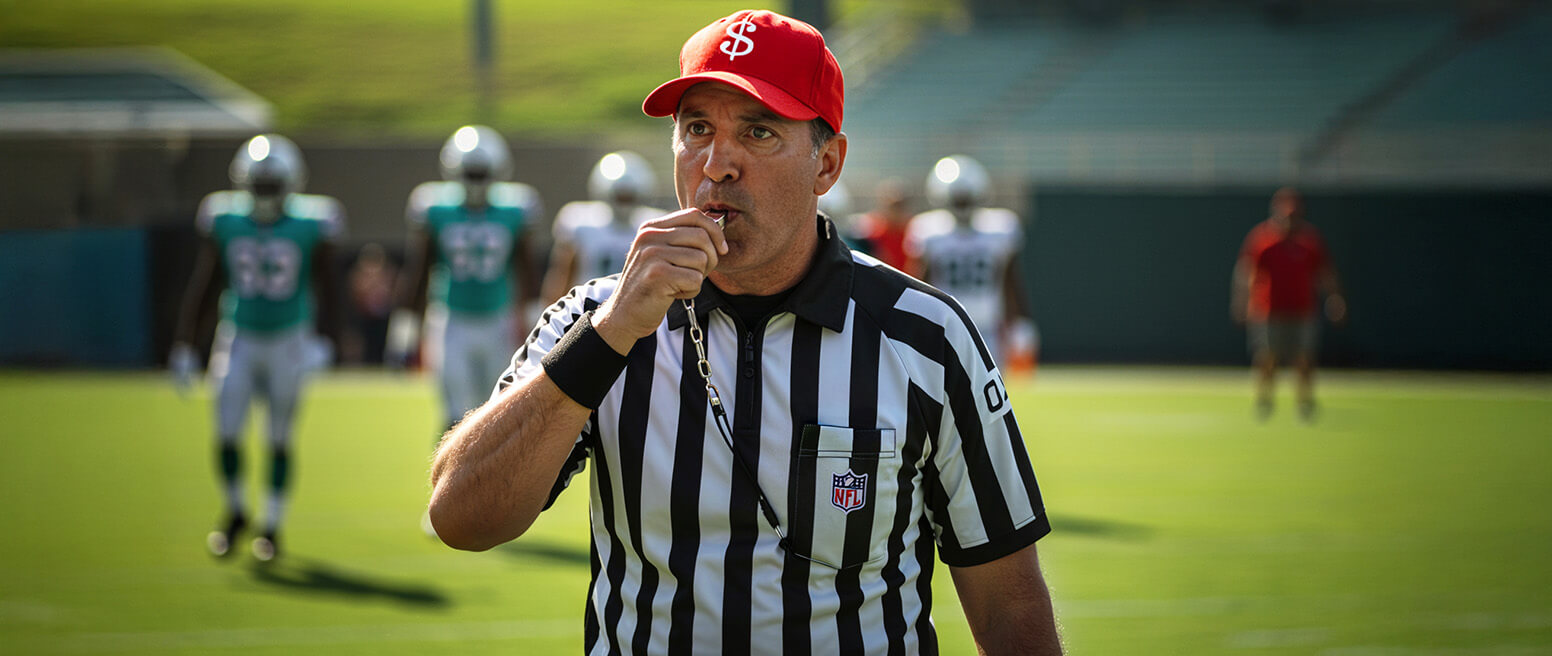Why Do Customer Disputes Happen? How Do You Prevent Them?
Customer disputes offer important consumer protections for credit and debit card transactions. That said, the dispute process was designed to be used as a last resort, when all other options failed. It’s seldom actually necessary, and should never be the initial response to a complaint.
With all that in mind, let’s examine what a customer dispute entails, when it’s appropriate, and what you, as a merchant, can do to prevent them.
Recommended reading
- Payment Reversals: How are Refunds & Chargebacks Different?
- How Do Banks Investigate Disputes on Credit Cards?
- The Bank Dispute Process: A Step-by-Step Guide
- What is a Transaction Dispute? Why Do Customers File Them?
- Authorization Reversals: Lost Sales are NOT Always Bad?
- Dispute Management System: How to Pick the Best Provider
What is a Customer Dispute?
- Customer Dispute
A customer payment dispute, more commonly called a “chargeback,” happens when a cardholder disputes (challenges) a payment card transaction and asks the card-issuing bank to reverse it. There are multiple situations in which this can occur. However, many disputes are ultimately filed without a valid justification.
[noun]/* kə • stə • mər • di • spyo͞ot/
As a cardholder protection, the inherent right to dispute payments is a good thing. It’s a guarantee that consumers can retrieve money lost to fraudsters, identity thieves, and other unauthorized users. Plus, the threat of chargebacks incentivizes merchants to stick to fair practices.
You can pay a heavy price, however, when chargebacks are used incorrectly or carelessly. Not only do you lose a sale, but you also lose shipping costs, merchandise costs, and more.
This can be a real “lose-lose” situation for you and your customer. Neither party can access any disputed funds until the issue is resolved, which could take weeks or even months. Plus, even if you manage to get a customer dispute overturned, you’re still liable for bank fees.
Learn more about chargebacksHow the Customer Dispute Process Works
For the cardholder, getting the customer dispute process started can be as simple as calling the bank and complaining about a billing charge. The bank will do a brief, initial investigation of the customer’s claim. They may submit a transaction inquiry through Order Insight(for Visa transactions) or Consumer Clarity(for Mastercard) to try and get more information from you.
Failing that, the initial complaint may then proceed to a chargeback. From there, you may attempt to fight the chargeback through representment if you believe it was filed without a valid reason. However, there is no guarantee that you’ll succeed.
How the customer dispute process plays out is almost entirely dependent on the reason the dispute was filed in the first place. With each dispute notification, banks will provide a specific chargeback reason code explaining the cause of the dispute.
When you receive this information, it will succinctly explain why the customer dispute was filed and lay out the type of evidence you would need to include if you decide to challenge the dispute. That’s not to say the reason codes are reliable though. Invalid chargebacks, known as first-party (or “friendly”) fraud chargebacks, represent a large portion of all chargebacks issued by banks.
So, if you can’t rely on reason codes, that raises a crucial question: why do customer disputes really happen? More importantly, what can you do about them?
The Top 10 Reasons for Customer Disputes & How to Resolve Them
There are a lot of reasons why consumers dispute credit card charges. Not all of them are valid, but not all are malicious, either.
Sometimes a customer forgot about a purchase they made. Or, maybe they didn’t understand your return policy, or failed to recognize your billing details on their credit card statement. In these cases, the customer dispute was filed accidentally. It’s still invalid…but it’s understandable.
In other instances, you may have been the one to make a mistake that led to the dispute. For example, if you accidentally overcharged the customer, failed to accurately describe a listing, or made some other mistake during the shipping process. These situations constitute merchant error and are a common theme in disputes.
Knowing how the customer dispute happened, and how to respond, can go a long way to improving your resolution ratio. To illustrate this, we’ll go over many of these reasons and provide you with some advice about how to mitigate your losses with a few best practices.
#1 | The merchant didn't provide the goods or services in a timely fashion
The Problem
Obviously, any business run by human beings is going to make the occasional error. If a customer orders something with you that takes an unreasonable amount of time to arrive (typically, anything outside of 10 days needs to be explained in your terms of service), they may file a dispute saying they never received the item. This is true even if it eventually arrives.
The Fix
Optimizing your fulfillment and shipping practices is a great workaround for this issue. Never be mysterious or vague about your fulfillment and shipping policies and practices. Explain every detail of your process, from packaging to estimated shipping times, and leave nothing to the imagination.
Another tip here: don’t wait around to ship packages either. As we are all aware, no merchant has control over shipping delays at the post office. Still, holding up your end of the bargain is a good plan, as it minimizes the risk of delays.
#2 | The item arrived damaged
The Problem
When a customer receives a product that arrived damaged or missing something they believed would be included, they will often turn to their bank. As a merchant, you’d naturally assume that the buyer would use the proper customer service channels to fix the problem. In reality, though: consumers often turn to the customer dispute process because they think it will be faster or easier.
The Fix
Unless the customer’s claim is entirely bogus (and you can prove it), odds are you slipped up somewhere in your product descriptions, or your supplier isn’t a reliable vendor. Either way, the customer is relying on you to sell them what they selected and paid for, and if that item doesn’t match its description, you will run into problems.
You can avoid this issue by carefully packing all goods. Don’t hide flaws; if the item is already used, scuffed, or broken, make sure the customer knows this beforehand. Aside from this, you should be very careful about who you trust to fulfill your shipments. When in doubt, ask for sample shipments before you list any third-party products.
#3 | You charged the buyer for the incorrect amount
The Problem
This is a pretty common mistake for merchants who manually key in their orders. For example, if you or your staff are in the middle of a rush, it can be very difficult to make sure you’re entering every order into your system correctly. It’s easy to see how a quick slip of the finger might lead to a customer dispute.
The Fix
For brick-and-mortar shops, it is a good idea to move to a “scan-only” POS terminal. There are many inexpensive cloud-based POS systems to choose from. Many even offer features like contactless payments and QR code payments.
For online stores, make sure that you use a reliable online payment processing portal, like Stripe or WooCoomerce. Anything you can do to automate your order entry process will help prevent disputed charges.
#4 | The buyer used stolen cardholder information
The Problem
This is outright criminal fraud. The cardholder is largely protected from the impact of fraud by the customer dispute process…but you won’t be.
You could be on the hook for any transactions you process that result from fraud. After the transaction goes through, there’s nothing you can really do, so the best you can hope for here is to avoid the situation in the first place.
The Fix
There is a wide variety of fraud tools available to help you weed out potential fraud attacks. Address Verification Service (AVS), CVV, and 3DS technology are just a few examples.
However, these tools alone won’t protect your business. They need to be deployed in an intelligent, coordinated manner. Thus, it’s best to prepare a multi-layered strategy to mitigate fraud (more on this further down).
#5 | The consumer experiences buyer’s remorse
The Problem
This refers to a situation in which a cardholder makes a purchase, regrets it later, then files a customer dispute to recoup their money. This constitutes a case of friendly fraud; a situation where a customer side-steps your return policy in order to gain an illegitimate refund. A customer may do this when they know they don’t have a good excuse and are worried that their return request may be denied.
The Fix
There really isn’t much you can do to prevent this one. Your best hope is to fight back whenever you recognize that this is what happened.
The best thing you can do here is to list your items as accurately as possible. Include high-res pictures, as well as detailed measurements and materials in the product description. If you can prove that the description matches the item shipped, the bank will be more inclined to reject the customer’s claim and return your funds.
#6 | A family member made the purchase & the cardholder disputed it
The Problem
This is a practice called family fraud. Many consumers fail to understand that this is another form of friendly fraud.
It’s often an innocent mistake. For example, a child of the cardholder makes an in-app purchase, then when the charge appears on their statement, the cardholder believes it’s invalid. Banks and payment processors don’t recognize these purchases as unauthorized, but the buyer may not be aware of this rule at all.
The Fix
If you can prove that the item was purchased by someone within the cardholder’s family (using IP address or geolocation data, for instance), the bank will probably reverse the chargeback.
Another tactic to consider here is to encourage best practices for your consumer as well. Enabling two-factor authentication and parental controls at checkout for online orders, and validating receipts in-store, can go a long way toward mitigating these disputes.
#7 | Bad affiliate traffic
The Problem
Affiliate marketing is a great way for you to promote your products. However, the traffic you sometimes receive through these channels can be fraudulent, or not what was promised to you in your service agreement.
There are several ways that scammers can leverage affiliate marketing to take advantage of you. Click spam, cookie stuffing, and URL hijacking are just a few examples.
The Fix
Vet your affiliates carefully to avoid affiliate traffic headaches. Communicate every aspect of your expectations and agreements, and enforce your terms of service defensively. Also, if your affiliate makes promises to buyers that you can’t keep, then you need to cut those bad actors out of your program.
#8 | Buyer wants to end a subscription
The Problem
Subscription services are considered high-risk because the business model features a high number of disputed charges. The reasons for this vary. But, generally speaking, people either forget about the subscription, make a mistake, or just want out of the agreement.
The Fix
Remind your customers before conducting any recurring payments. You should include a cancellation link in your email, make contact information easy to find, and make it extremely easy to cancel the service as a rule. While you want to retain customers, you don’t want to do so at the cost of additional chargebacks.
#9 | Inaccurate Product Description
The Problem
It’s not uncommon for buyers to complete a purchase, then later dispute the charge, claiming that the item they received didn’t match what was promised. It could be that the size or dimensions of the item were oversold on your site. Or, maybe that the colors don’t quite match what the buyer saw in the pictures.
The Fix
Again: take extra care with your product descriptions!
You need to optimize your interior fulfillment practices to ensure that you never ship the wrong items. Your product descriptions should be accurate and give a reasonable, realistic picture of what is going to arrive at your buyer’s door. Also, always provide shipping, tracking, and delivery notifications to your customers. Keep this information on file so that it can be referenced later if needed.
#10 | The buyer is trying to get something for free
The Problem
Keep in mind: not all disputes result from errors or misunderstandings like those above.
Unfortunately, many disputes happen because consumers ignore return policies, refuse to wait for refunds, or simply want to get something for free. This is a practice known as “cyber shoplifting,” and it’s an increasingly common practice for cardholders. Buyers learn that they can abuse the customer dispute process by making a purchase, then simply disputing the transaction later.
The Fix
You only have two possible courses of action here: refund the transaction, hoping to avoid a chargeback, or engage in chargeback representment.
During representment, you will literally “re-present” the transaction to the bank in order to reverse the customer’s provisional refund and get your funds back. Representment is a very costly and time-consuming process, however. No merchant is guaranteed a win, even when they are in the right. In many cases, it’s helpful to seek professional advice to help optimize chargeback responses.
With Customer Disputes, Prevention is Key
You should remember that the easiest way to win a customer dispute is to keep it from happening in the first place. Below are some easy steps you can take to avoid customer transaction disputes:
Burdened with invalid customer disputes? Not to worry: Chargebacks911® can help.
With the industry’s first and only full service dispute management solution, Chargebacks911 can help you prevent disputes, recover revenue, and grow your business. Contact us today to learn about a no-obligation ROI analysis.
FAQs
What is a customer dispute?
A customer payment dispute, more commonly called a chargeback, happens when a cardholder disputes (challenges) a payment card transaction and asks the card-issuing bank to reverse it. There are multiple situations where this can occur, but few reasons it actually should.
What happens when a customer disputes a charge?
When a customer dispute is initiated, the case is propelled through a series of steps, including initial contact, provisional refund to the buyer, issuance of a chargeback. If the merchant believes the case is invalid, the case may go on to include reprementment, and even chargeback arbitration.
What causes customer disputes?
There are three main causes for customer disputes. First is criminal fraud, meaning someone accessed the customer’s payment details without permission to complete a purchase. Next is merchant error, meaning the seller made a mistake that led to the dispute. Finally, there’s friendly fraud, which can be either accidental or intentional forms of first-party (i.e. consumer) fraud.
How do you resolve a customer dispute?
There are only two ways to resolve customer disputes. First, the merchant may process a full or partial refund for the item disputed. Second, once a chargeback has been issued, the merchant may argue against the disputed transaction through a dispute resolution platform or via the representment process.














